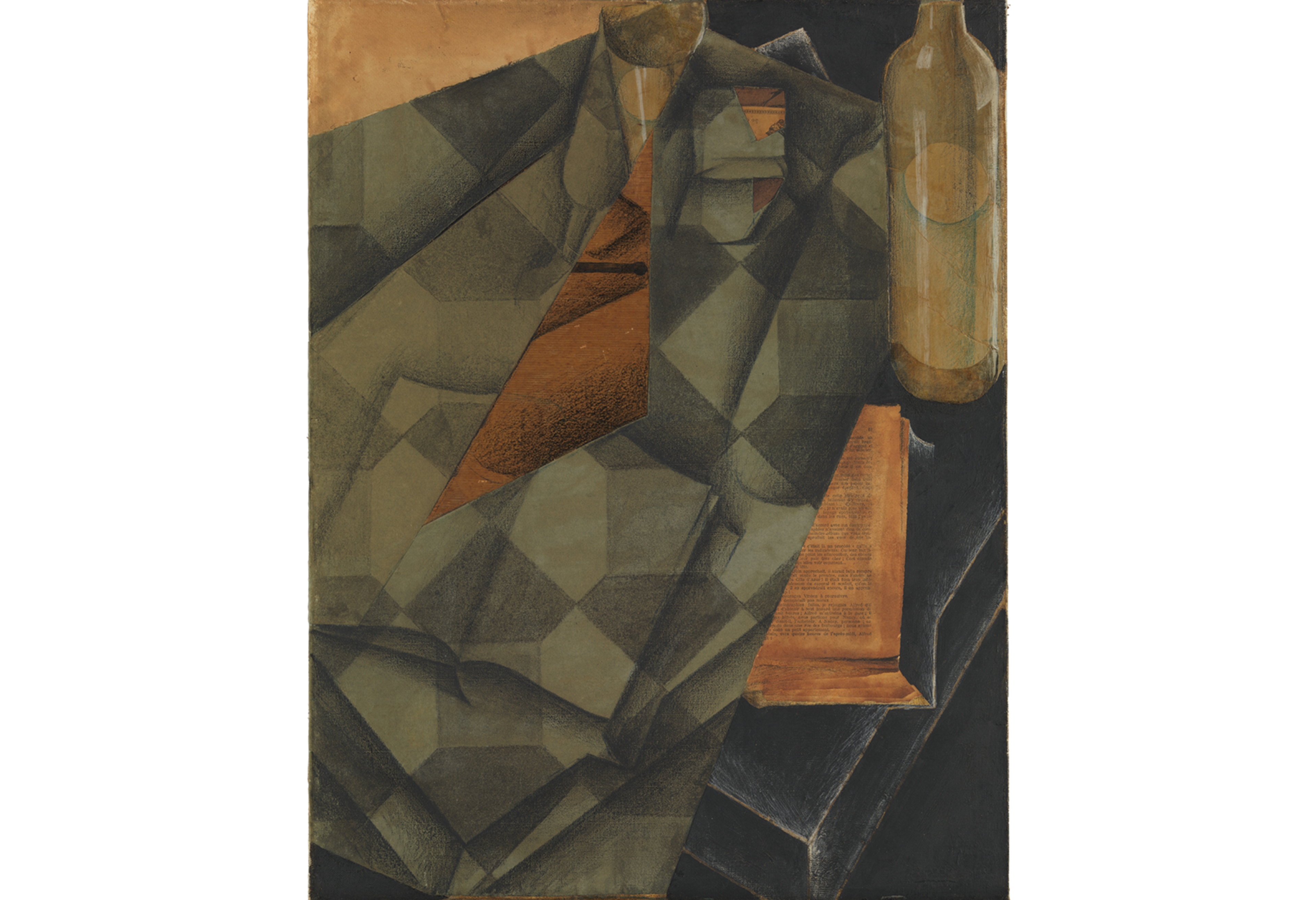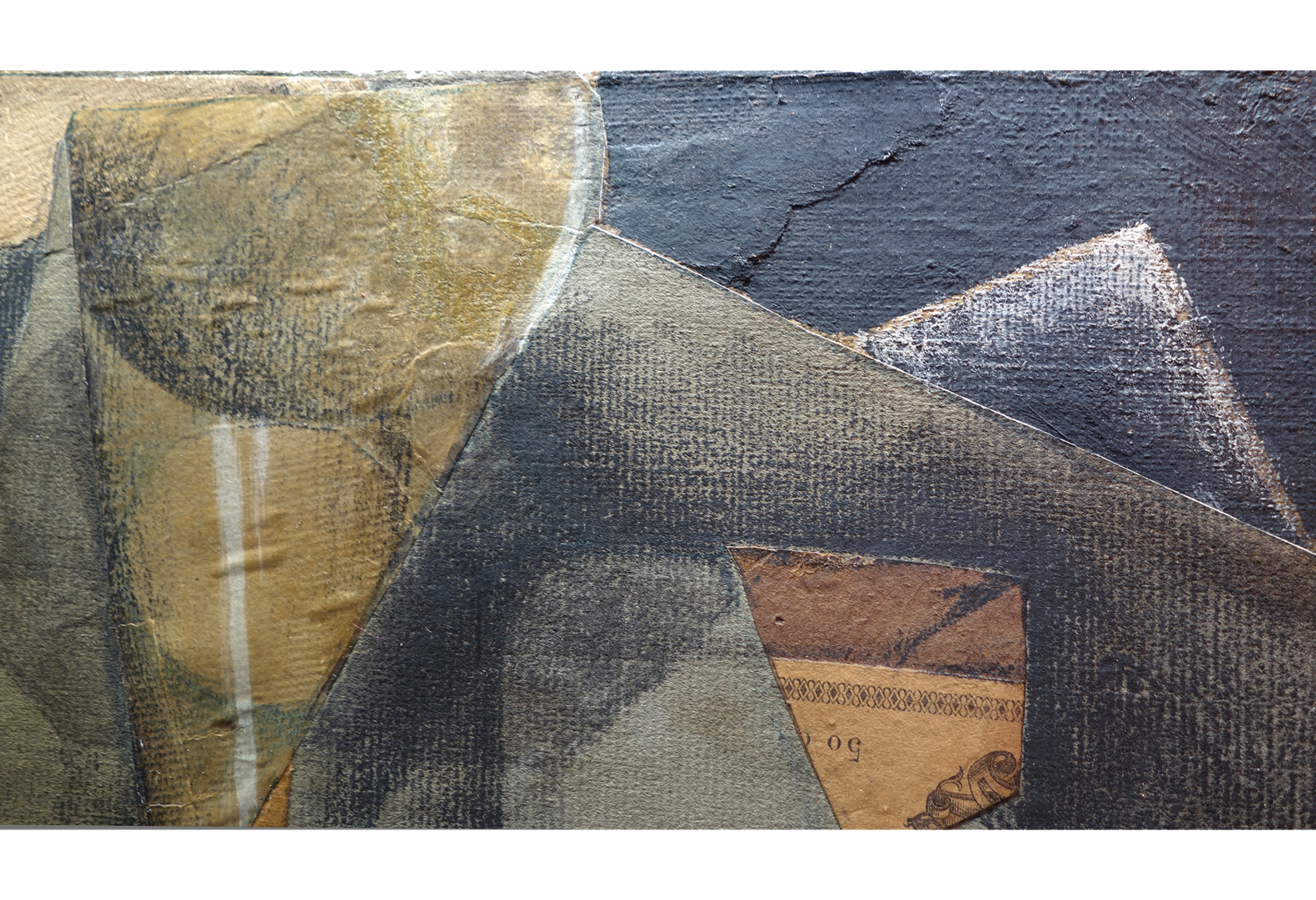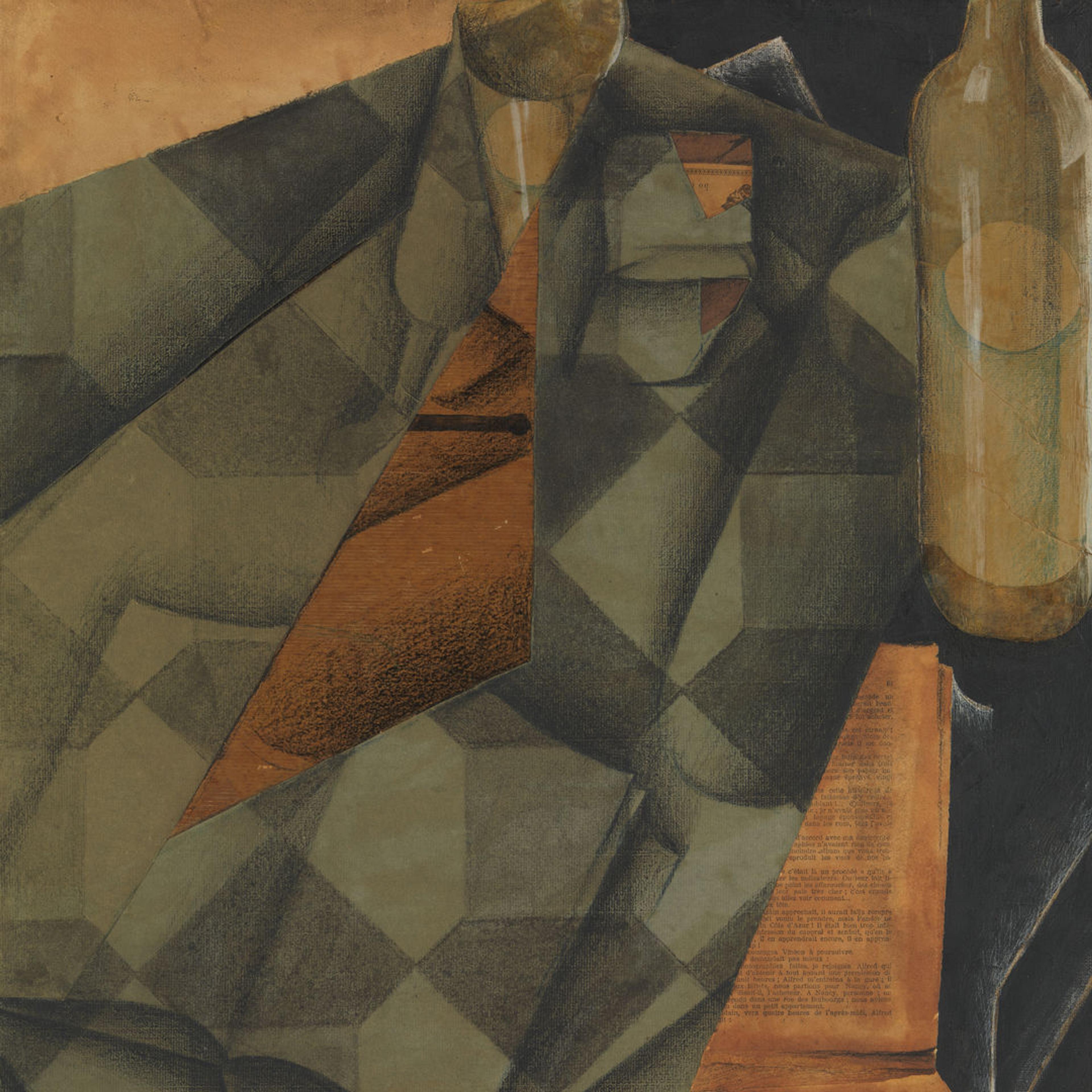
Juan Gris (1887–1927), Book and Glass, 1914. Conté crayon, charcoal, wax crayon, watercolor, gouache, oil, cut-and-pasted printed and selectively varnished wallpaper, blue and white laid papers, transparentized paper, and printed white wove papers; adhered overall onto a sheet of torn newspaper, adhered to primed canvas; subsequently mounted to a honeycomb panel, 25 11/16 x 19 13/16 in. (65.2 x 50.3 cm). Promised Gift from the Leonard A. Lauder Cubist Collection
Juan Gris included artists’ papers, wallpaper, pages from a book, and a tobacco wrapper in his collage, Book and Glass. The checked areas were created by drawing on large pieces of blue laid paper. (Laid paper is characterized by a series of lines known as chain and laid lines that are formed during the papermaking process.) The prominent texture of this artist’s paper caught and held the particulate matter of Gris’s wax crayon, charcoal, and Conté crayon. The paper was originally light blue, similar in color to the wax crayon that Gris used to outline the collage forms both before and after he cut them. Gris also used tracing paper to capture the transparency of the glass bottle at upper right. (FIG. 1) Other types of paper incorporate the real world into the artwork: for example, the book page from volume four of the Fantômas fictional crime series and the small brown tobacco wrapper. The cut paper fragments were pasted onto a larger piece of newspaper that Gris mounted onto the canvas. Gris partially tore the newspaper underlayer at the top, which allows the weave of the fabric to become part of the final work (FIG. 2).

FIG. 1. Detail from the left center of Book and Glass. Note the way the textures of the two papers affected the application of black crayon.

FIG. 2. Detail of Book and Glass showing a variety of papers used by Gris.
For more information, see:
Braun, Emily. "Juan Gris's Cubist Mysteries." In Cubism: The Leonard A. Lauder Collection (MMA 2014), pp. 130–135, 311–312.
